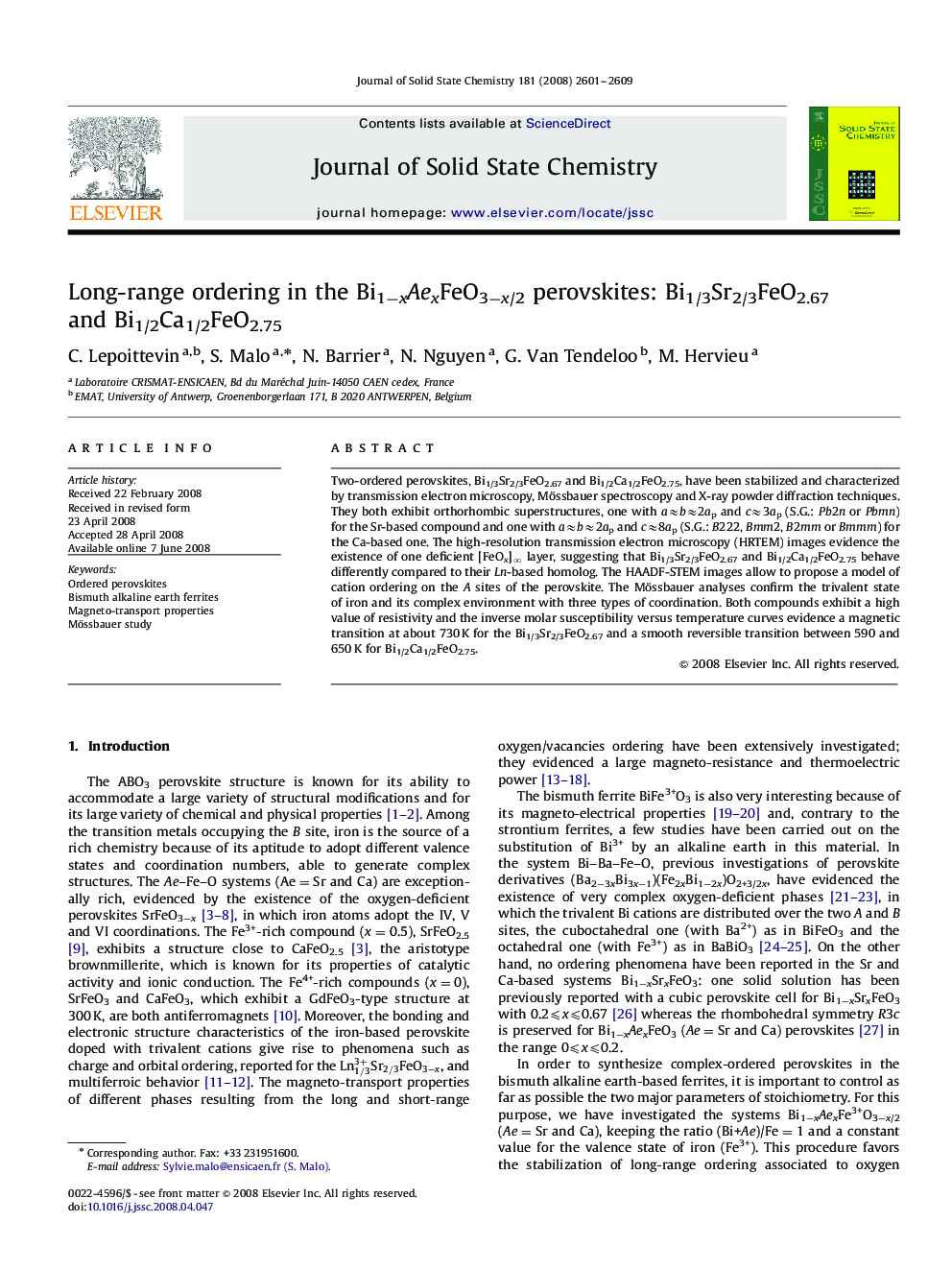| Article ID | Journal | Published Year | Pages | File Type |
|---|---|---|---|---|
| 1332006 | Journal of Solid State Chemistry | 2008 | 9 Pages |
Two-ordered perovskites, Bi1/3Sr2/3FeO2.67 and Bi1/2Ca1/2FeO2.75, have been stabilized and characterized by transmission electron microscopy, Mössbauer spectroscopy and X-ray powder diffraction techniques. They both exhibit orthorhombic superstructures, one with a≈b≈2ap and c≈3ap (S.G.: Pb2n or Pbmn) for the Sr-based compound and one with a≈b≈2ap and c≈8ap (S.G.: B222, Bmm2, B2mm or Bmmm) for the Ca-based one. The high-resolution transmission electron microscopy (HRTEM) images evidence the existence of one deficient [FeOx]∞ layer, suggesting that Bi1/3Sr2/3FeO2.67 and Bi1/2Ca1/2FeO2.75 behave differently compared to their Ln-based homolog. The HAADF-STEM images allow to propose a model of cation ordering on the A sites of the perovskite. The Mössbauer analyses confirm the trivalent state of iron and its complex environment with three types of coordination. Both compounds exhibit a high value of resistivity and the inverse molar susceptibility versus temperature curves evidence a magnetic transition at about 730 K for the Bi1/3Sr2/3FeO2.67 and a smooth reversible transition between 590 and 650 K for Bi1/2Ca1/2FeO2.75.
Graphical abstractComplex long-range ordering of Bi/Ae cations and oxygen/vacancies consisting of 12-fold and 32-fold enlargement of the perovskite unit cell is observed in Bi1/3Sr2/3FeO2.67 and Bi1/2Ca1/2FeO2.75, respectively.Figure optionsDownload full-size imageDownload as PowerPoint slide
